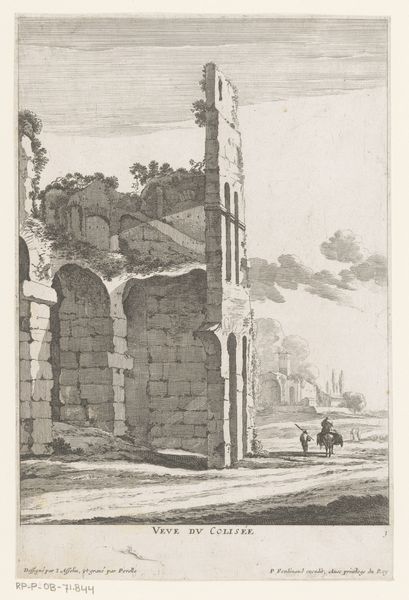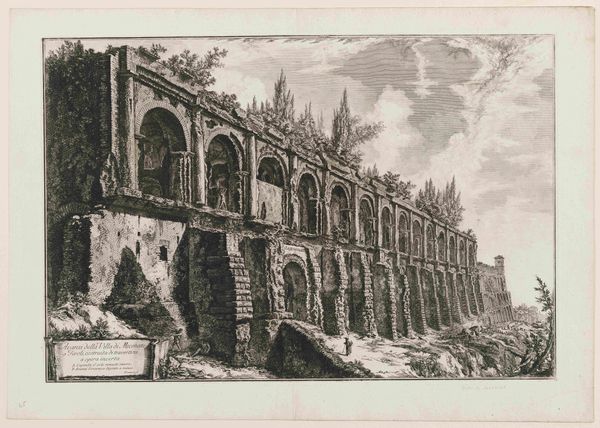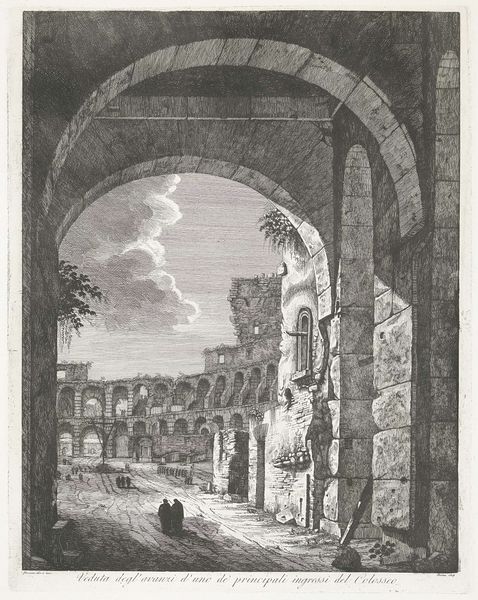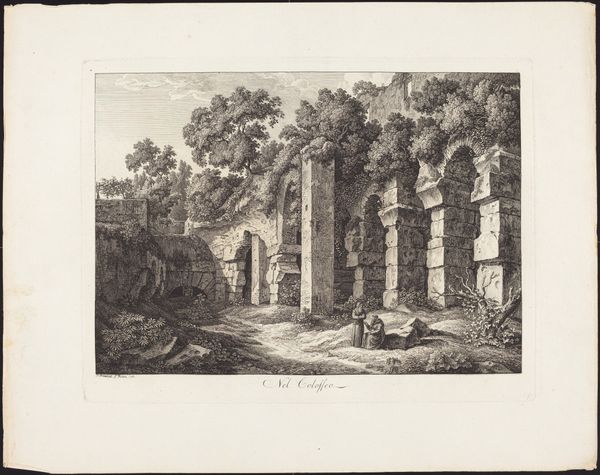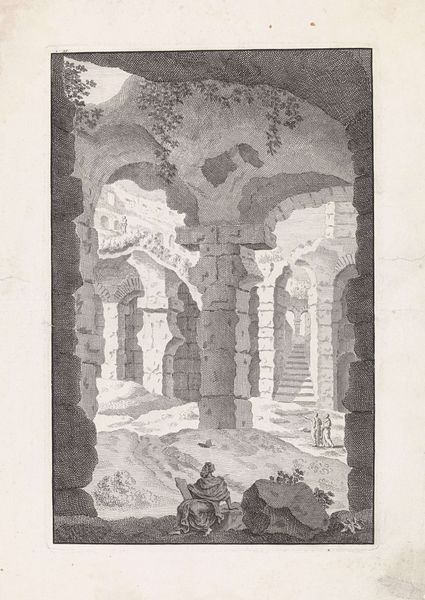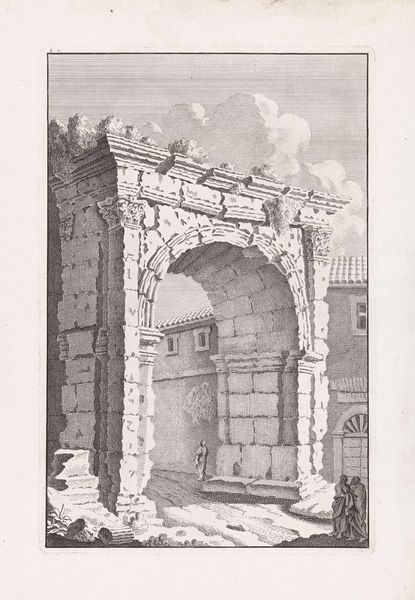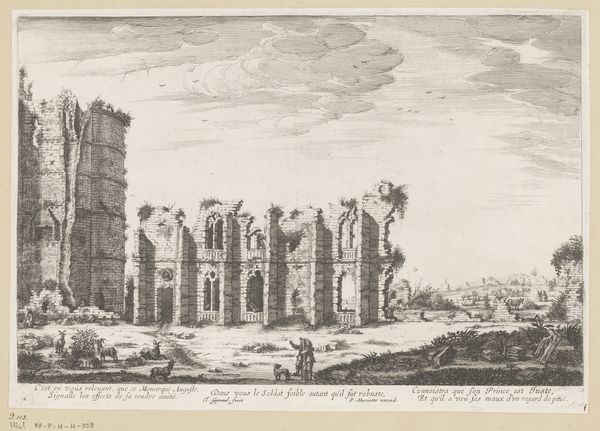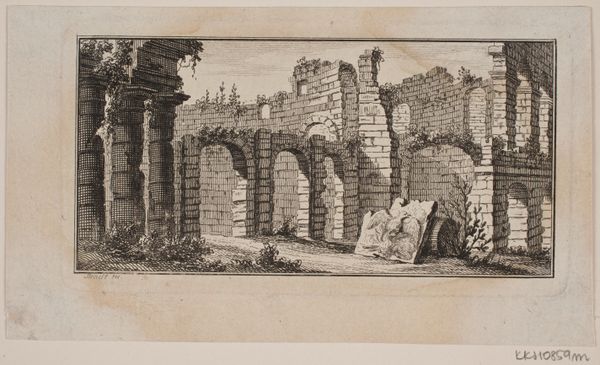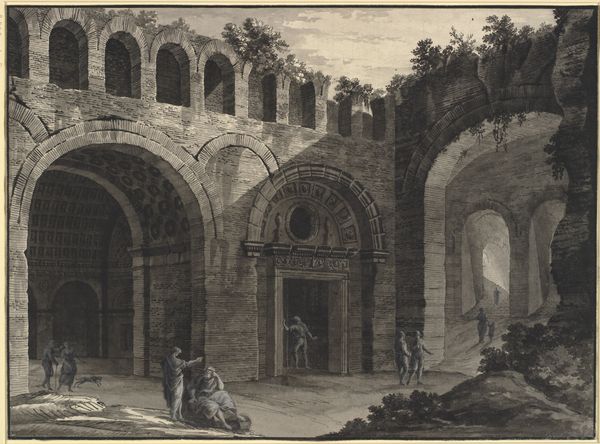
print, engraving, architecture
#
baroque
# print
#
landscape
#
form
#
ancient-mediterranean
#
line
#
history-painting
#
engraving
#
architecture
#
realism
Dimensions: height 400 mm, width 264 mm
Copyright: Rijks Museum: Open Domain
Bonaventura van Overbeek's 'Roman Ruin with Three Corinthian Columns' is an etching, made around the turn of the 18th century. The etching process would have involved coating a copper plate with wax, then carefully scratching lines into the wax to expose the metal. Immersing the plate in acid would bite away the exposed lines, allowing them to hold ink for printing. What I find compelling about this print is the way that it translates the massive, weighty presence of Roman architecture into something linear, almost delicate. Van Overbeek is not just representing the site, but also performing a kind of labor: the patient, meticulous work of the etcher. Think of the sheer amount of time it would have taken to render each stone, each shadow. The print becomes not just a picture of a ruin, but a meditation on time, labor, and the translation of one medium, monumental stone architecture, into another, the portable and reproducible image. Ultimately, it reminds us that every work of art is the product of human effort, shaped by the materials and processes that bring it into being.
Comments
No comments
Be the first to comment and join the conversation on the ultimate creative platform.

